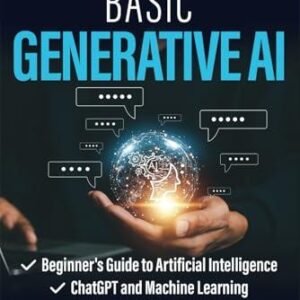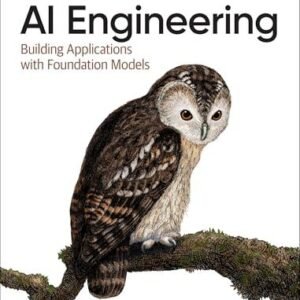In today’s rapidly evolving industrial landscape, the convergence of artificial intelligence (AI) and manufacturing is transforming the way we approach production and maintenance. At the forefront of this revolution is predictive maintenance—an innovative strategy that leverages advanced AI software to foresee equipment failures before they happen. By harnessing the power of data analytics and machine learning, manufacturers are not only extending the lifespan of their assets but also optimizing operating efficiency and reducing unplanned downtimes. In this article, we’ll delve into how AI-driven predictive maintenance is reshaping the manufacturing sector, exploring its benefits, real-world applications, and the future of maintenance in an increasingly automated world. Join us as we uncover the groundbreaking technologies paving the way for smarter, more efficient manufacturing processes.
Table of Contents
- Transforming Operational Efficiency with AI-Driven Predictive Maintenance
- Key Technologies Underpinning Predictive Maintenance in Manufacturing
- Implementing AI Software: Steps for a Successful Transition
- Maximizing ROI: Best Practices for Leveraging Predictive Maintenance Solutions
- In Conclusion
Transforming Operational Efficiency with AI-Driven Predictive Maintenance
In today’s fast-paced manufacturing landscape, harnessing the power of AI can significantly enhance operational efficiency through predictive maintenance. By analyzing vast amounts of data from machinery and production processes, AI algorithms can identify patterns and predict potential equipment failures before they occur. This proactive approach not only minimizes downtime but also extends the lifespan of machinery, resulting in substantial cost savings for businesses. Key benefits of implementing AI-driven predictive maintenance include:
- Reduced downtime: Scheduling maintenance when needed rather than following a rigid timeline keeps production running smoothly.
- Cost efficiency: Lower repair costs and optimal resource allocation are achieved by addressing issues proactively.
- Enhanced safety: By preventing equipment malfunctions, workplace hazards are significantly reduced.
- Data-driven decisions: Actionable insights aid in making informed strategic decisions for operations improvement.
Moreover, seamlessly integrating AI solutions into existing manufacturing frameworks allows businesses to leverage real-time monitoring systems that not only track machine performance but also anticipate maintenance requirements. Data from various sources—including sensors, equipment logs, and historical maintenance records—form the backbone of these intelligent systems, enabling them to generate precise forecasts. Consider the comparison of traditional maintenance versus AI-driven maintenance in the following table:
| Aspect | Traditional Maintenance | AI-Driven Maintenance |
|---|---|---|
| Maintenance Schedule | Time-based | Predictive |
| Downtime | Unpredictable | Minimized |
| Cost Implications | Higher repair costs | Lower overall expenses |
Adopting AI-powered solutions empowers manufacturers to transition from reactive to proactive strategies, ensuring operational resilience and sustained competitive advantage in an increasingly digital economy.
Key Technologies Underpinning Predictive Maintenance in Manufacturing
Predictive maintenance in manufacturing relies on a range of cutting-edge technologies that work cohesively to forecast equipment failures and optimize operational efficiency. Internet of Things (IoT) devices play a pivotal role by gathering real-time data from machinery, allowing for continuous monitoring. This data feeds into big data analytics platforms, which leverage advanced algorithms to detect patterns and anomalies indicative of potential issues. Additionally, machine learning enhances predictive capabilities, enabling systems to learn from historical performance data and improve accuracy over time. Other significant technologies include cloud computing, which facilitates the storage and processing of vast amounts of data remotely, and augmented reality (AR), which can assist technicians in diagnosing issues by overlaying digital information onto physical equipment.
Incorporating these technologies requires a robust infrastructure, typically comprising various components such as sensors, communication networks, and analytical software. The following table summarizes key technologies and their primary functions:
| Technology | Function |
|---|---|
| IoT | Real-time monitoring of machinery |
| Big Data Analytics | Data analysis for pattern recognition |
| Machine Learning | Improving prediction accuracy over time |
| Cloud Computing | Remote data storage and processing |
| Augmented Reality | Enhancing diagnostic processes |
By integrating these technologies into their operations, manufacturers not only reduce downtime and maintenance costs but also enhance the overall efficiency of their production processes. The evolution of these tools represents a fundamental shift in how industries approach maintenance strategies, positioning predictive maintenance as a key component for sustainable growth in the competitive manufacturing landscape.
Implementing AI Software: Steps for a Successful Transition
Transitioning to AI software in manufacturing requires careful planning and a structured approach. Begin by clearly defining your objectives; identify key performance indicators (KPIs) that will measure the effectiveness of the AI integration. This clarity will help you communicate the value of the initiative to stakeholders and team members. Collaboration among departments is vital, as insights from production, maintenance, and IT teams will contribute to a holistic implementation. Additionally, conducting a risk assessment to understand potential challenges will prove beneficial in developing contingency plans.
Once the groundwork is laid, focus on selecting the appropriate software that aligns with your company’s needs. Ensure you evaluate different AI solutions and consider factors such as scalability, ease of use, and integration capabilities with existing systems. Following the selection, prioritize training and support for your staff to cover any technological gaps. Involve employees early in the process through workshops and hands-on demonstrations, fostering a culture of learning and adaptation. Below is a simple table to outline the key steps:
| Step | Description |
|---|---|
| Define Objectives | Establish clear goals and KPIs for success. |
| Conduct Risk Assessment | Identify challenges and create contingency plans. |
| Evaluate Solutions | Choose AI software that meets your unique needs. |
| Provide Training | Support staff with workshops and hands-on sessions. |
Maximizing ROI: Best Practices for Leveraging Predictive Maintenance Solutions
To effectively enhance your return on investment from predictive maintenance solutions, it’s crucial to establish a comprehensive strategy that aligns with your organization’s goals. Start by identifying key performance indicators (KPIs) that matter most to your operations. Focus on metrics such as equipment uptime, maintenance costs, and mean time to repair (MTTR). By prioritizing these KPIs, you’ll be better equipped to measure the impact of predictive maintenance implementations on your bottom line. Regular reviews of these metrics will help you to iterate on your strategy and make necessary adjustments to your predictive models.
Furthermore, investing in staff training and engagement is essential for optimizing your predictive maintenance initiatives. Equip your team with the knowledge and tools to interpret predictive analytics effectively. Facilitate workshops and hands-on training sessions that encourage practical learning and knowledge sharing. An engaged workforce that understands the benefits of predictive maintenance will not only enhance operational efficiency but will also foster a culture of continuous improvement. Consider employing a feedback mechanism where staff can share their insights, as their on-ground experience can significantly enhance predictive models and operational outcomes.
In Conclusion
the integration of AI software for predictive maintenance is not just a fleeting trend in the manufacturing sector; it’s a pivotal shift that promises to redefine operational efficiency and asset management. By harnessing the power of data analytics and machine learning, manufacturers are stepping into a new era where downtime becomes a rare exception rather than the norm.
As we’ve explored, the benefits are manifold—from reducing maintenance costs and enhancing equipment longevity to improving safety and overall productivity. However, the successful implementation of predictive maintenance tools requires a careful approach, including workforce training and considerations around cybersecurity.
As technology continues to evolve, embracing AI-driven solutions is not merely an option but a necessity for those who wish to stay competitive in an increasingly fast-paced market. The future of manufacturing is bright, and with predictive maintenance at the forefront, businesses can look forward to a robust and resilient operational landscape.
Stay tuned as we continue to discuss the latest advancements in industrial technology and how you can leverage them to drive your organization’s success. Your journey towards smarter manufacturing begins now—are you ready to take the leap?





